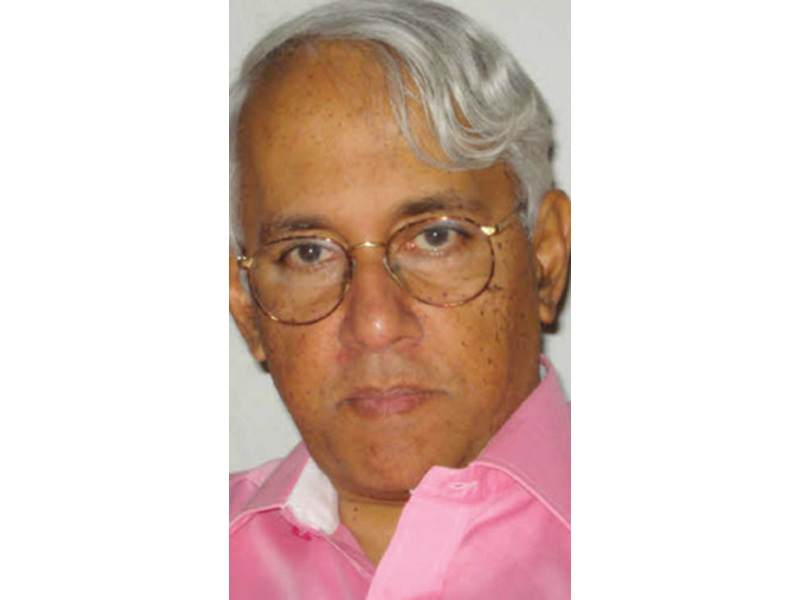Anatomy of applause
 Suresh Subrahmanyan
Suresh Subrahmanyan
It has been barely three weeks since I returned home from my annual Carnatic music adrenalin rush — a non-stop, round-the-clock festival of musicians of every hue strutting their stuff across the length and breadth of Chennai. In earlier missives, I have dwelt at length with all the usual trappings, musical and non-musical, that the December music season jamboree provides. Rather, I fell to thinking about the way in which members of the audience, since time immemorial, appreciate an artist’s performance during a concert. I am particularly fascinated by the unique manner in which we use the age-old device of applauding to let musicians know we have enjoyed what they have taken the trouble to offer us for our delectation.
Applause is an integral part of audience participation during a performance that we do not consciously think about. It just happens. At times spontaneously, at times mechanically. And at times caught between and betwixt, not sure if the performance is deserving of applause or not. Thus, the end result could be a spontaneous eruption or an apologetic whimper, but applause all the same. Let’s look at this fascinating aspect of audience appreciation closely.
Before I embark on this task, let me establish one cardinal rule governing the employment of applause at a Carnatic music concert. Namely, that the culmination of any pause of performance must necessarily be followed by a round of applause. There is no question of sitting rock-still when a piece of music has just concluded. Hands must come together and burst forth.
In this respect, we differ greatly from audience behaviour at western classical music concerts. If you so much as clap your hands gently after the first movement of one of Bach’s Brandenburg Concertos, censorious glances will be directed at you while you look for a non-existent hole in the ground for instant exit. That is their tradition, though I am always baffled as to why, if the first movement of a symphony moves one to applaud, this natural instinct must be curbed till the third movement. Always assuming there isn’t a fourth movement! If you are a novice, better to hold back and join in the applause when the entire audience has got into the act. Minding your Ps and Qs at a western classical music concert is a given. In the words of classical pianist Emanuel Ax, “We seem to have set up some very arcane rules as to when it is actually okay to applaud.”
Thankfully, that is not the case with Indian classical music performances. Having observed audience behaviour at Carnatic music concerts for several decades now, I have arrived at some definitive ideas about how to classify different types of applause. Please excuse my improvised Latin.
Applaudus Erupticus. The audience goes berserk. The end of a particular piece has so moved them that they simply cannot stop clapping. So much so that the performer concerned almost looks a bit sheepish, as if to say, “Is this really me they are getting so excited about?” It is, it is, you have outdone yourself. Soak it all in while you can. Who knows when it will happen again?
Applaudus Apologeticus. Oftentimes, this irrespressible desire to applaud after any and every piece places the audience in an awkward muddle. That particular alapana by the artist in Raga Suddha Saveri did not quite hit a home run. Truth to tell, the essay did not even get to first base, placing the audience in a quandary. However, decades of applauding at all natural pauses in a concert has ensured that the act is inextricably embedded in our muscle memory. So inevitably a few barely audible pitter-patter claps emanate from distant parts of the concert hall. This time the performer really looks sheepish for the right reasons, but soldiers on.
Applaudus Boisterous. There is an impossible person, ubiquitous at every concert, who makes it a habit of standing up after each rendition to applause loudly and conspicuously, at times accompanied by a stentorian, “bale, sabhash!” He is a jack-in-the-box, and no power on earth can stop him. A few in the audience regard him as a learned afficionado, and rush to click selfies with him after the concert. Most though, consider him an insufferable pain-in-the-neck, who ought to have been turned away at the gate.
Applaudus Sympatheticus. In Tamil parlance, you could describe this lot as ‘the paavam brigade.’ The artist tried his or her best, but the effort was clearly not up to the mark. In an auditorium with a seating capacity of 600, only 32 had turned up, half of them relatives of performers on stage. The applause, muted as it must be, is to provide encouragement, although it comes across as solace. That said, we have known artists with this history later emerge as shining stars. Therefore the artist(s) quite often visualise this as future applause rising to a crescendo. Hope springs eternal.
So, there we are. A brief analysis of the genres of applause I have witnessed over the years. Gentle reader, do add your own genus to my impromptu classification.
(Suresh Subrahmanyan is a Bengaluru-based former advertising professional)
















Add comment